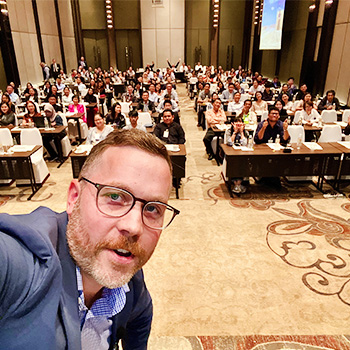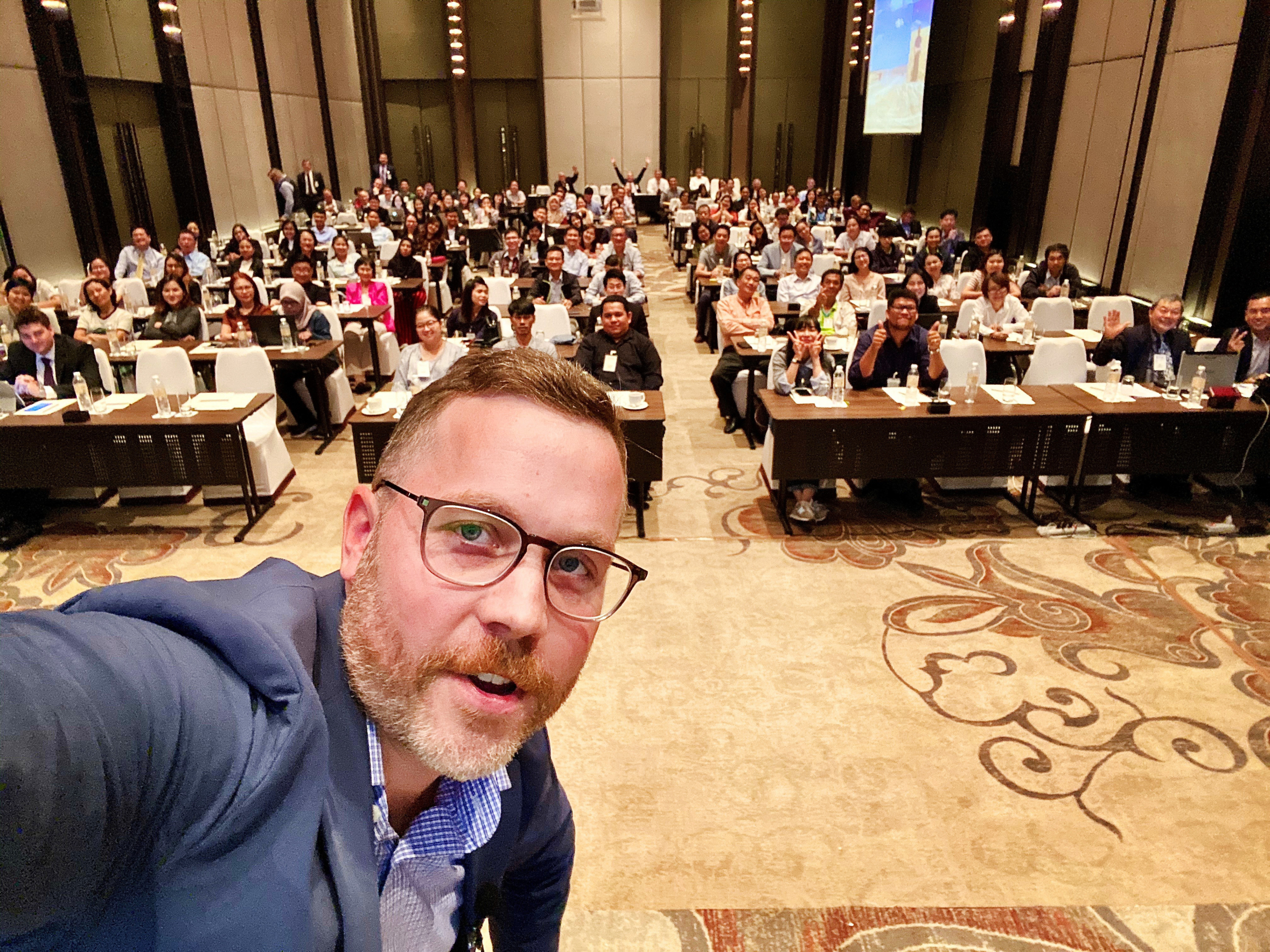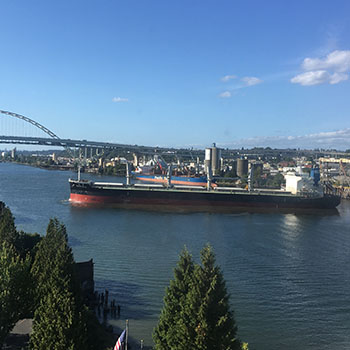By Michael Anderson, USW Assistant Director, West Coast Office
From Nov. 1 to 10, 2019, a team of eight U.S. Wheat Associates (USW) representatives crisscrossed the South Pacific covering almost 20,000 miles in ten days to report on the quality of the 2019 U.S. wheat crop. Touching down in three countries, the team met with more than 300 wheat buyers, flour millers and wheat food executives representing a major portion of wheat importers in their markets.
I had the good fortune to participate in my first series of Crop Quality Seminars with USW colleagues, wheat farmers and U.S. wheat industry experts in Indonesia, Thailand and the Philippines. Working as Assistant Director in USW’s West Coast Office in Portland, Ore., I get to meet with many overseas trade delegations in the United States and it was interesting to see so many familiar faces in their own countries. My colleagues agreed that it was also valuable to see and taste some of the beautiful pastries, breads, noodles and more end products these customers produce with flour milled from U.S. wheat.
To have this first experience in Southeast Asia was exciting because the region is of tremendous importance to our farmers, accounting for 30 percent of global wheat trade. The Philippines and Thailand are among the top 10 customers for U.S. wheat, with the Philippines ranking second among U.S. wheat importers year-to-date. The entire South Asia region makes up the second largest destination for wheat imports from the United States, totaling 3.28 million metric tons (MMT) so far in marketing year 2019/20.
Reporting on crop quality is USW’s largest trade service activity each year. It starts as soon as harvest starts in the United States. USW partner organizations collect and analyze hundreds of samples from country elevators and USW compiles the data in an annual Crop Quality Report. Seminars like the ones in which I participated are held in dozens of countries where growers, traders, consultants and customers have the unique opportunity to learn about and discuss the functional qualities that year of all six U.S. wheat classes.
For example, participants heard from and were able to ask questions directly of experts like Art Bettge who has participated in several USW seminars since 2014. He is a respected cereal chemistry expert who worked at the USDA Agricultural Research Service Western Wheat Quality Lab in Pullman, Wash., for many years. At the South Asian seminars, Bettge reviewed the value of solvent retention capacity (SRC) analysis to determine end use and baking quality and interpreted SRC data about the 2019 U.S. crop and how growing conditions affected soft white (SW) quality factors.
It was a privilege to be part of the entire team who also covered global and U.S. wheat supply and demand during the seminars. My presentation was focused on helping customers make the most profitable use possible from the weekly USW Price Report, Harvest Reports in season, the weekly Commercial Sales Reports as well as the complete Crop Quality Report and individual quality reports by class that USW and its partners publish.
I also learned quite a bit from my participation. Our industry’s commitment to transparency is demonstrated in the data and seminars on U.S. wheat quality, an activity that has been shared with customers for more than 40 years. I also saw how the opportunity to interact directly with members of the wheat trade, technical specialists, USW staff and growers adds unique value to and separates U.S. wheat from competing supplies.
Now I am looking forward to the next opportunity to share this information with our customers around the world!




